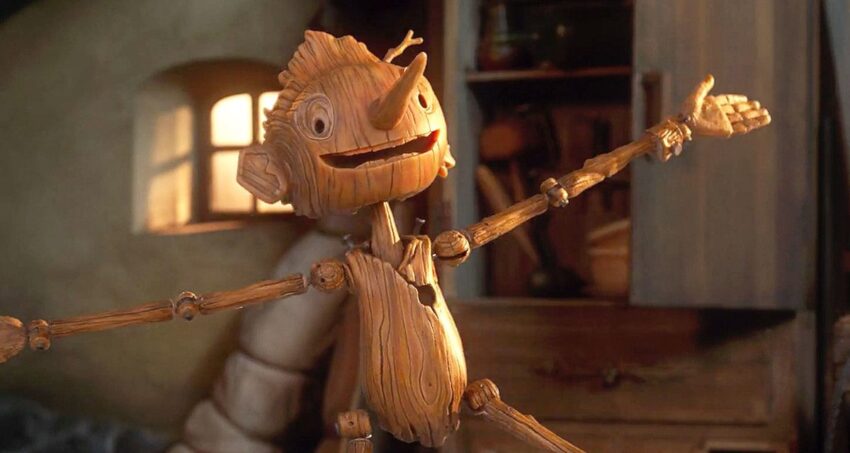One of the hardest parts of writing your climax is deciding how long to make it. In some cases, having your characters teeter on the edge of life and death for extended pages can feel like you’re stretching the climax to fit your word limit. At other times, the extended suspense can create sky-high conflict that drives your readers to tear through the last pages of your book toward the end.
The question is: what makes the difference? Two different characters from two different books can be in the exact situation, and yet the struggles of one can be heart-pounding and suspenseful while the other seems drawn out and predictable. You can even like and relate to both characters equally, or they could both be set in stories with comparable death tolls.
Yet something hits differently.
There’s a special, invisible element that makes all the difference.
Here to explore exactly what that element is and how you can leverage it to make your story’s pacing perfect is the dark fantasy Guillermo Del Toro’s Pinocchio.
Pinocchio
In Italy during World War I, the elderly Geppetto uses his skills as a woodworker to provide for himself and his son Carlo after the death of his wife. Together, the two share a special song and a dream of growing a pine cone into a full tree that Carlo will use to carve his first real woodworking piece.
But Geppetto’s world comes crashing down when an air raid strikes his village, taking Carlo with him. Although he plants the pine cone and cares for it as it grows into a tree, he is plunged into despair for twenty years, unable to work or think past Carlo’s death.
One night, in a blind and drunken rage, he chops down Carlo’s tree and creates a hap-hazard puppet with it, before collapsing, exhausted and in despair. That night, the puppet is visited by the Wood Sprite, an immortal fairy who has pity on Geppetto’s condition and realizes that to recover from Carlo’s death, he needs something to love again. So she grants his puppet life, and when Geppetto awakes the next morning, he is horrified to see his clumsy creation bouncing around his house, declaring himself to be Pinocchio with a lively spirit and no regard for rules or manners.
But the puppet has Carlo’s voice and remembers his song, and despite everything — from his complete disregard for the consequences of his actions to his compulsive lying (which of course makes his nose grow) — Geppetto begins to feel responsible for him. So when he is kidnapped by a circus to be displayed as a side show event, Geppetto chases them across Italy to rescue Pinocchio.
But his mission to save Pinocchio is fraught with challenges. The fascist party is slowly taking over Italy, locking down the country and controlling its people as it spreads. Pinocchio (although generally well-intentioned) is also inexperienced and careless, making their reunion seem less and less likely. World War II is brewing on the horizon as the two cross land and sea to reach each other.
Finally, they reunite. But as they cross the sea to reach home, they both end up trapped in the belly of a whale. If they could reach the blowhole, they might have a chance to escape, but otherwise the escape is too far up. And if they can’t think of a solution soon, the whale will plunge back under the surface, where it can survive for weeks without coming up for breath.
That’s when Pinocchio remembers his nose.
Like the other classic retellings of the tale, all Pinocchio has to do to make his nose grow is lie. So he shouts that he hates Geppetto, that he doesn’t want to go home, and that he thinks they’ll never make it out. Within minutes, a sturdy branch long enough to reach the top of the whale forms. Geppetto chops the nose off, and then begins climbing, hesitantly, while the massive branch sways and turns under his feet. His age is showing, and Pinocchio isn’t the only one who watches his progress with bated breath, sure he’ll fall to the ground and be injured, unable to make it back up before the whale plunges below the surface.
Miraculously, he makes it to the top, and then it’s Pinocchio’s turn. Carefully, he maneuvers around the crooked stick as it twists dangerously under his feet. But the stick has now been turning and twisting enough in the blowhole that the whale can’t ignore it. A sneeze is forming, strong enough to shake the entire inside of the whale.
Pinocchio falls.
Geppetto grabs him just in time, but is caught off balance, and the two fall toward the ground, just as the whale takes a massive inhale. They hover for a moment, just above the belly of the whale — and then it sneezes both of them out.
Writing Climaxes with Confidence
You might have noticed that despite the several paragraphs above it took me to explain the climax, most of what happened could have occurred much more smoothly with the same results. Geppetto didn’t have to struggle, Pinocchio didn’t have to fall, and the whale didn’t have to sneeze. They all could have made it out of the blowhole without the obstacles that were placed in their way.
And that isn’t the only thing that stands between them and safety throughout the climax. Even after they escape the whale, they are chased across the ocean as it attempts to recover its lunch, leading to more danger.
And all of that could easily be avoided.
As writers, it is difficult to know what to cut and what to keep. This is especially true in climaxes, when every second is supposed to be intentional. Needless words are a luxury we can’t afford in the most emotional, compelling moments in our work, and both of these elements are meant to reach their pinnacle in the climax.
So how can we tell when the extra stuff — the needless teetering, the lives hanging in the balance for minutes on end, the redundant struggles we throw at our protagonists through the last pages of the book just for the fun of it — will generate breath-taking suspense and intrigue, and when they will come across just as extra words?
Simply put, these moments will be compelling and tense when your readers genuinely can’t predict how they will end. And the way you control what your readers can predict is through expertly framing the climax, so that the elements leading up to it make it unclear how it will conclude.
Although there are methods you can use to generate suspense even when your readers know how your story will end, to create the multi-layered, rich suspense found in climaxes like Pinocchio’s (even when the story itself is relatively simple), framing is absolutely crucial.
And it turns out that Pinocchio is a master at framing.
If you look it up online, you’ll find it described as “dark fantasy.” Everything serves to support this description, from the crooked design of its titular character to the setting in Italy during Mussolini’s fascist regime. The movie opens with a sequence through Carlo’s eyes, meant to display the full weight of his death. We watch many of Pinocchio’s friends face the harsh realities of Pre-World War II Europe, suffering under both dictatorship and the Great Depression. And even fantastical beings such as the Wood Sprite are given a solemn yet eerie design, adding to the story’s unsettling nature. So despite the carefree simplicity attributed to the original Pinocchio, we as the audience have no way of telling whether or not the climax would end with one or more of the main character’s deaths.
If you want to make your readers truly feel the suspense of your climax, framing is absolutely crucial.
And it’s worth noting that this expands past the realm of genre and the tone of your work, to simpler parts of your story, as well.
For instance, while it was believable that one of the characters may die at the hands of the whale on the ocean, that didn’t mean that every possible setup for the climax would have created the frame for a believable death. There were certain frames, however, that played right into the idea of concluding the movie with a crushing but characteristic death.
How can you tell which options will lead to a better frame for your climax than others?
Ask yourself how you would write the climax if you were going to kill off one or more of the characters. Would you give two of them a touching moment together before they charge into battle? Would you allow one to finish their character development before the climax? Would the setting be completely different, to lend to a more picturesque and characteristic sunset for your character?
When you set these elements up, you are subtly framing your climax in such a way that your readers don’t know which way it will turn out. The natural assumption is that your story will end in a “happily ever after,” even if it’s imperfectly so. When you introduce elements that contradict that belief, by framing the climax with cues that death, betrayal, or tragedy is right around the corner, readers will cling to both beliefs, hoping against hope that their favorite characters will survive unscathed, even as they know the narrative is pointing in the opposite direction. They will teeter between both beliefs — knowing that you, as the author, have ultimate power and could always write a happily ever after, even as the story itself seems to eliminate the possibility.
Thus, you can have one character linger unconscious and injured, strung between life and death, for just a few pages longer, assured that your readers are hanging on to every word. You can extend their heist, having them pause as yet another guard questions their validity and threatens to capture them for theft. You can have them teeter across a tree branch, inches from freedom while their support sways under them, for minutes on end.
There are a thousand other examples of “needless” obstacles that become integral parts of your climax when they are written well and are characteristic of the rest of your work. If your climax seems thin or in need of content, don’t be afraid to stretch it out. Just make sure you set it up well. Because once you frame your story, you can write your climax with confidence.



Let us know in the comments:
What stories have you read where you couldn’t tell how it would end? What elements did the writer use to frame the story?


Hi! My name is Mara, and I’m a Christian artist, violinist, and blogger. I remember the day that I decided that I would learn something new about what makes a good story from every book I picked up — whether it was good, bad, or a mixture of both. I use this blog as a way of sharing some of the tips and tricks I’ve learned, and highlight which books, cartoons, and movies have taught me the most about writing an awesome story.


I had an interesting idea for the climax, which is for the main character (who is evil) to finally reach the end of their character arc just before the climax, and go off to find the other main characters and finally make things right. However, this character is planning to sacrifice themselves to save the others, and much of the climax will be framed to look like he’ll do exactly that. He believes that he has to die as justice for all the horrible things he’s done to others. He’s fully prepared to sacrifice himself as he heads off to join the battle for what he believes is the last time.
Is this the kind of framing that you talked about in this article? How can I make this as ridiculously intense as possible? (For the record, they are heading off to join a major battle)
Yes, that sounds great! As long as you write it as if he is going to die (even if you save him at the very end) your readers won’t know what to believe and you’ll have an incredibly tense and emotional climax. That kind of climax will also come with buildup. If you’ve spent the whole book building up his downfall as a villain so that this moment really matters, you’ll definitely end up making your climax ridiculously intense!